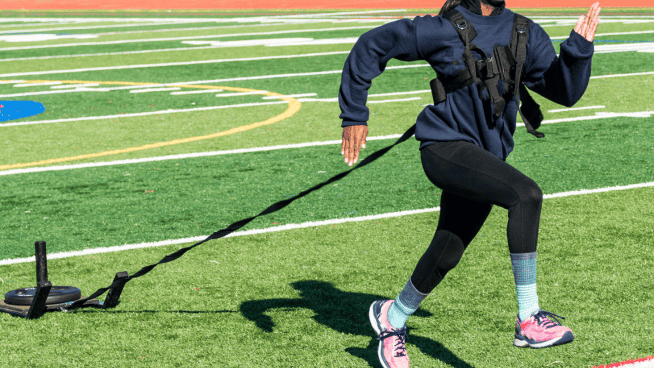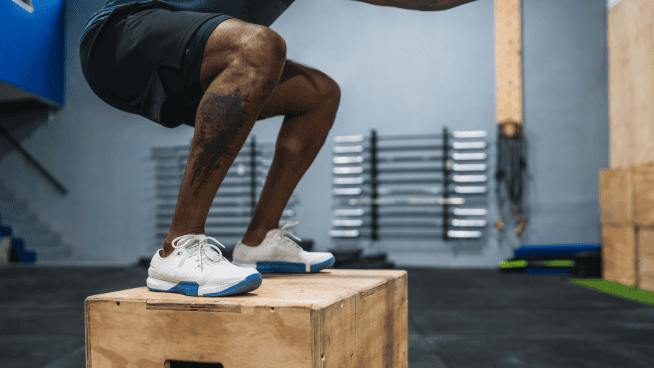How Young Pitchers Should Prepare for the Upcoming Season
In essence, pitching is a series of perfectly timed movements, so preparing to pitch should also be sequenced and timed for perfection. After all, the best pitching performances are called “perfect games.”
The first a thing a young pitcher should do to prepare for throwing strikeouts is…not pick up a baseball. I know this may come as a shock, but consider the following. As a high school athlete, ideally you’ve been playing basketball, hockey or football and giving your arm, body, and mind a needed break from baseball. So starting back to baseball in January or February, you probably haven’t pitched in months. You need to go slow at first and prepare in a clear progression.
The most important aspects of preparedness are: (1) going into the season healthy, with your body primed to stay healthy; (2) understanding your arm and body, and knowing when to rest before and during the season; (3) improving your strength relative to your body weight; and (4) communicating with your coach and parents about how you’re feeling as you prepare for and enter the season.
1. Go into the season healthy, with your body primed to stay healthy
Regarding staying healthy, here’s what Eric Cressey, an expert in training baseball players, says: “Contrary to popular belief, playing [baseball] year-round is not a good idea. In fact, it isn’t even good enough to qualify as a bad idea; it is an atrocious idea. If you want my ideal competitive season for a youth baseball player, it’s to pick up a ball and start tossing around Thanksgiving, progressing to bullpen work in early January—after long-tossing distance has been progressed.”
2. Understand your arm and body, and know when to rest before and during the season
Pitch Count
Do you know what the safe and appropriate pitch count is for your age? Besides how you feel, the pitch count is one of the best ways to protect your arm from injury. These recommendations are made by field experts. Following a pitch count is much more accurate and useful for protecting your arm than an inning count.
Have you developed a plan to work toward that pitch count? In other words, you need to set up a program of flat ground throwing with progressive intensity and volume, followed by long tossing and then pitching off a mound.
Velocity
Have you thrown out the radar gun yet? How hard you throw does not automatically determine your success. There are a lot of hard throwers working at Wal-Mart and playing slow pitch softball. How you pitch and stay healthy is what will make you successful. Check out this Eric Cressey article.
Mobility and Flexibility
The biggest factor limiting recovery for a pitcher’s arm health is not the build-up of lactic acid, but the steady loss of range of motion over the course of a season. Restoring range of motion after each outing is critical for maintaining the health of your arm.
- Hip Flexors – use a kneeling hip flexor: stretch knee on a pad and pull your foot up to your back side; for mobility, use the Warrior Lunge
- Groin – Lateral Lunge for mobility and flexibility
- Hamstrings – the Hurdler Stretch is a simple way; for mobility, perform Single-Leg Deadlifts
- Ankles – Mini-Squats with 35-inch plates under the ball of the feet; Calf Wall Stretches
- Shoulder Internal Rotation – Side-Lying Cross Body Stretch and Sleeper Stretch
- Elbow Extension – stretch the biceps with the arm straight, palms forward
- Pec Minor – supine with partner pressing both shoulders into a mat and a rolled towel between the shoulder blades
- Thoracic mobility – rotational movements and extension over a foam roll
3. Improve your strength relative to your body weight
Strength Training
Can you:
- Perform a Pull-Up? Can you perform 10?
- Perform a Push-Up? Can you perform 10?
- Perform a proper Lunge? Can you do six sets of 10? The Lunge is very functional for a pitcher, and six sets of 10 is similar to the demands on your lower body of throwing six innings
- Perform a Single Leg Deadlift? Can you perform five sets of 12? This number is similar to a complete game and a good measure of your finishing strength. The movements also mimic the follow through. It’s very important to have front leg strength in order to control your pitches and to protect your arm.
Dynamic Strengthening Exercises
The Thrower’s Ten is a good set of functional exercises for a young pitcher to learn and to use for arm protection.
Improve upper-back and scapular strength by performing Face Pulls, Single-Arm Rows and Isometric Rotator Cuff Strengthening in half kneeling position.
4. Communicate with your coach and parents about how you’re feeling as you prepare for and enter the season
Pre-Season Progression
Your pre-season progression should look like this:
- Play another sport that doesn’t involve throwing.
- Restore lost flexibility and mobility in the shoulders, elbows, wrists, hips, knees, ankles and even the neck.
- Begin your training program focusing on body weight exercises, then progress to the weight room and focus on strength.
- Progress to plyometric and aggressive medicine ball exercises.
- Review last season’s video to identity your flaws, and begin to mentally prepare for what you need to work on. This way, when you start throwing, you can make functional progress on the mound.
- Jog only to clear your mind.
- Stretch to heal your body and sprint to improve your performance, even in-season.
- Band work should decrease in-season and as throwing progresses in the pre-season. As throwing progresses, focus should shift to restoring flexibility and mobility.
- Throwing progression should be flat ground to long toss to mound to fastball to change-up to breaking pitches.
- Breaking pitches should not be thrown until you are physically mature to the point that you are shaving.
Watch Cy Young Award winner Justin Verlander’s off-season workout.
RECOMMENDED FOR YOU
MOST POPULAR
How Young Pitchers Should Prepare for the Upcoming Season
In essence, pitching is a series of perfectly timed movements, so preparing to pitch should also be sequenced and timed for perfection. After all, the best pitching performances are called “perfect games.”
The first a thing a young pitcher should do to prepare for throwing strikeouts is…not pick up a baseball. I know this may come as a shock, but consider the following. As a high school athlete, ideally you’ve been playing basketball, hockey or football and giving your arm, body, and mind a needed break from baseball. So starting back to baseball in January or February, you probably haven’t pitched in months. You need to go slow at first and prepare in a clear progression.
The most important aspects of preparedness are: (1) going into the season healthy, with your body primed to stay healthy; (2) understanding your arm and body, and knowing when to rest before and during the season; (3) improving your strength relative to your body weight; and (4) communicating with your coach and parents about how you’re feeling as you prepare for and enter the season.
1. Go into the season healthy, with your body primed to stay healthy
Regarding staying healthy, here’s what Eric Cressey, an expert in training baseball players, says: “Contrary to popular belief, playing [baseball] year-round is not a good idea. In fact, it isn’t even good enough to qualify as a bad idea; it is an atrocious idea. If you want my ideal competitive season for a youth baseball player, it’s to pick up a ball and start tossing around Thanksgiving, progressing to bullpen work in early January—after long-tossing distance has been progressed.”
2. Understand your arm and body, and know when to rest before and during the season
Pitch Count
Do you know what the safe and appropriate pitch count is for your age? Besides how you feel, the pitch count is one of the best ways to protect your arm from injury. These recommendations are made by field experts. Following a pitch count is much more accurate and useful for protecting your arm than an inning count.
Have you developed a plan to work toward that pitch count? In other words, you need to set up a program of flat ground throwing with progressive intensity and volume, followed by long tossing and then pitching off a mound.
Velocity
Have you thrown out the radar gun yet? How hard you throw does not automatically determine your success. There are a lot of hard throwers working at Wal-Mart and playing slow pitch softball. How you pitch and stay healthy is what will make you successful. Check out this Eric Cressey article.
Mobility and Flexibility
The biggest factor limiting recovery for a pitcher’s arm health is not the build-up of lactic acid, but the steady loss of range of motion over the course of a season. Restoring range of motion after each outing is critical for maintaining the health of your arm.
- Hip Flexors – use a kneeling hip flexor: stretch knee on a pad and pull your foot up to your back side; for mobility, use the Warrior Lunge
- Groin – Lateral Lunge for mobility and flexibility
- Hamstrings – the Hurdler Stretch is a simple way; for mobility, perform Single-Leg Deadlifts
- Ankles – Mini-Squats with 35-inch plates under the ball of the feet; Calf Wall Stretches
- Shoulder Internal Rotation – Side-Lying Cross Body Stretch and Sleeper Stretch
- Elbow Extension – stretch the biceps with the arm straight, palms forward
- Pec Minor – supine with partner pressing both shoulders into a mat and a rolled towel between the shoulder blades
- Thoracic mobility – rotational movements and extension over a foam roll
3. Improve your strength relative to your body weight
Strength Training
Can you:
- Perform a Pull-Up? Can you perform 10?
- Perform a Push-Up? Can you perform 10?
- Perform a proper Lunge? Can you do six sets of 10? The Lunge is very functional for a pitcher, and six sets of 10 is similar to the demands on your lower body of throwing six innings
- Perform a Single Leg Deadlift? Can you perform five sets of 12? This number is similar to a complete game and a good measure of your finishing strength. The movements also mimic the follow through. It’s very important to have front leg strength in order to control your pitches and to protect your arm.
Dynamic Strengthening Exercises
The Thrower’s Ten is a good set of functional exercises for a young pitcher to learn and to use for arm protection.
Improve upper-back and scapular strength by performing Face Pulls, Single-Arm Rows and Isometric Rotator Cuff Strengthening in half kneeling position.
4. Communicate with your coach and parents about how you’re feeling as you prepare for and enter the season
Pre-Season Progression
Your pre-season progression should look like this:
- Play another sport that doesn’t involve throwing.
- Restore lost flexibility and mobility in the shoulders, elbows, wrists, hips, knees, ankles and even the neck.
- Begin your training program focusing on body weight exercises, then progress to the weight room and focus on strength.
- Progress to plyometric and aggressive medicine ball exercises.
- Review last season’s video to identity your flaws, and begin to mentally prepare for what you need to work on. This way, when you start throwing, you can make functional progress on the mound.
- Jog only to clear your mind.
- Stretch to heal your body and sprint to improve your performance, even in-season.
- Band work should decrease in-season and as throwing progresses in the pre-season. As throwing progresses, focus should shift to restoring flexibility and mobility.
- Throwing progression should be flat ground to long toss to mound to fastball to change-up to breaking pitches.
- Breaking pitches should not be thrown until you are physically mature to the point that you are shaving.
Watch Cy Young Award winner Justin Verlander’s off-season workout.











